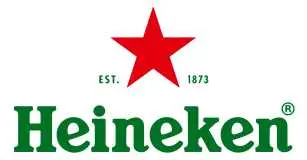
Digital Radar Market Size, Trends, Demand, Analysis, Challenges, and Future Opportunities
Digital Radar Market Growth, Size, Trends Analysis - By Type, By Dimension, By Application, By End Use - Regional Outlook, Competitive Strategies and Segment Forecast to 2034
| Published: Feb-2025 | Report ID: IACT2523 | Pages: 1 - 228 | Formats*: |
| Category : Information & Communications Technology | |||
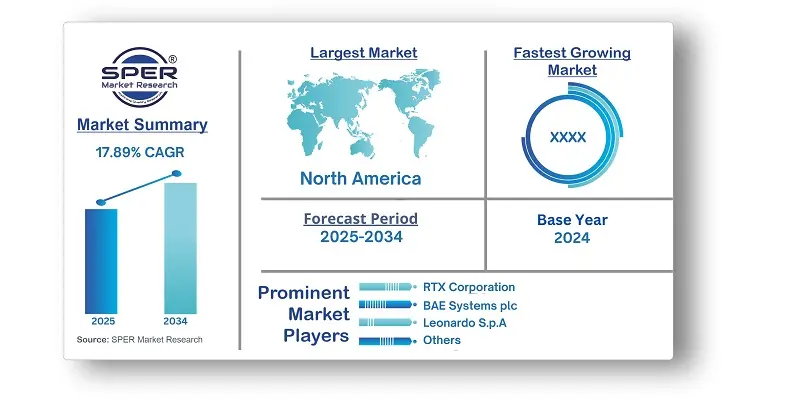
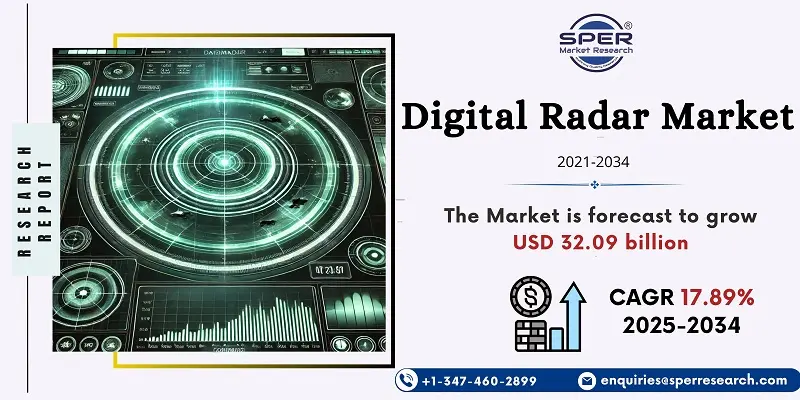
- Northrop Grumman said in August 2024 that the Electronically Scanned Multifunction Reconfigurable Integrated Sensor (EMRIS) has successfully flown on a U.S. military aircraft. The business demonstrated a new digital radar capability with this breakthrough, which will allow jets to avoid a greater range of dangers in the future. Since advancements in information technology and chip architecture, EMRIS—an electronically scanned array—has become much more reliable.
- NXP Semiconductors N.V. introduced SAF86xx, an expansion of its automotive radar one-chip line, in January 2024. To provide improved and secure data transfer over Automotive Ethernet, the most recent device combines a multi-core radar processor, a MACsec hardware engine, and a high-performance radar transceiver. This complete system prepares the way for advanced software-defined radar by integrating with the company's high-performance S32 processors, power management, and vehicle network connectivity.
| Report Metric | Details |
| Market size available for years | 2021-2034 |
| Base year considered | 2024 |
| Forecast period | 2025-2034 |
| Segments covered | By Type, By Dimension, By Application, By End Use. |
| Regions covered | North America, Latin America, Asia-Pacific, Europe, and Middle East & Africa. |
| Companies Covered | Advanced Micro Devices, Inc., BAE Systems plc, Elbit Systems Ltd., Indra, Israel Aerospace Industries Ltd., L3Harris Technologies Inc., Leonardo S.p.A, Lockheed Martin Corporation, Magna International, Inc., NXP Semiconductors N.V., RTX Corporation, Saab AB, Teledyne FLIR LLC, Thales Group, and UHNDER Inc., along with others. |
- Global Digital Radar Market Size (FY’2021-FY’2034)
- Overview of Global Digital Radar Market
- Segmentation of Global Digital Radar Market By Type (Active, Passive)
- Segmentation of Global Digital Radar Market By Dimension (2D, 3D, 4D)
- Segmentation of Global Digital Radar Market By Application (Security & Surveillance, Safety, Others)
- Segmentation of Global Digital Radar Market By End User (Automotive, Defense & Aerospace, Others)
- Statistical Snap of Global Digital Radar Market
- Expansion Analysis of Global Digital Radar Market
- Problems and Obstacles in Global Digital Radar Market
- Competitive Landscape in the Global Digital Radar Market
- Details on Current Investment in Global Digital Radar Market
- Competitive Analysis of Global Digital Radar Market
- Prominent Players in the Global Digital Radar Market
- SWOT Analysis of Global Digital Radar Market
- Global Digital Radar Market Future Outlook and Projections (FY’2025-FY’2034)
- Recommendations from Analyst
1.1. Scope of the report1.2. Market segment analysis
2.1. Research data source
2.1.1. Secondary Data2.1.2. Primary Data2.1.3. SPERs internal database2.1.4. Premium insight from KOLs
2.2. Market size estimation
2.2.1. Top-down and Bottom-up approach
2.3. Data triangulation
4.1. Driver, Restraint, Opportunity and Challenges analysis
4.1.1. Drivers4.1.2. Restraints4.1.3. Opportunities4.1.4. Challenges
5.1. SWOT Analysis
5.1.1. Strengths5.1.2. Weaknesses5.1.3. Opportunities5.1.4. Threats
5.2. PESTEL Analysis
5.2.1. Political Landscape5.2.2. Economic Landscape5.2.3. Social Landscape5.2.4. Technological Landscape5.2.5. Environmental Landscape5.2.6. Legal Landscape
5.3. PORTERs Five Forces
5.3.1. Bargaining power of suppliers5.3.2. Bargaining power of buyers5.3.3. Threat of Substitute5.3.4. Threat of new entrant5.3.5. Competitive rivalry
5.4. Heat Map Analysis
6.1. Global Digital Radar Market Manufacturing Base Distribution, Sales Area, Product Type6.2. Mergers & Acquisitions, Partnerships, Product Launch, and Collaboration in Global Digital Radar Market
7.1. Active7.2. Passive
8.1. 2D8.2. 3D8.3. 4D
9.1. Security & Surveillance9.2. Safety9.3. Others
10.1. Automotive10.2. Defense & Aerospace10.3. Others
11.1. Global Digital Radar Market Size and Market Share
12.1. Asia-Pacific
12.1.1. Australia12.1.2. China12.1.3. India12.1.4. Japan12.1.5. South Korea12.1.6. Rest of Asia-Pacific
12.2. Europe
12.2.1. France12.2.2. Germany12.2.3. Italy12.2.4. Spain12.2.5. United Kingdom12.2.6. Rest of Europe
12.3. Middle East and Africa
12.3.1. Kingdom of Saudi Arabia12.3.2. United Arab Emirates12.3.3. Qatar12.3.4. South Africa12.3.5. Egypt12.3.6. Morocco12.3.7. Nigeria12.3.8. Rest of Middle-East and Africa
12.4. North America
12.4.1. Canada12.4.2. Mexico12.4.3. United States
12.5. Latin America
12.5.1. Argentina12.5.2. Brazil12.5.3. Rest of Latin America
13.1. Advanced Micro Devices, Inc.
13.1.1. Company details13.1.2. Financial outlook13.1.3. Product summary13.1.4. Recent developments
13.2. BAE Systems plc
13.2.1. Company details13.2.2. Financial outlook13.2.3. Product summary13.2.4. Recent developments
13.3. Elibit Systems Ltd.
13.3.1. Company details13.3.2. Financial outlook13.3.3. Product summary13.3.4. Recent developments
13.4. Indra
13.4.1. Company details13.4.2. Financial outlook13.4.3. Product summary13.4.4. Recent developments
13.5. Israel Aerospace Industries Ltd.
13.5.1. Company details13.5.2. Financial outlook13.5.3. Product summary13.5.4. Recent developments
13.6. L3Harris Technologies Inc.
13.6.1. Company details13.6.2. Financial outlook13.6.3. Product summary13.6.4. Recent developments
13.7. Leonardo S.p.A
13.7.1. Company details13.7.2. Financial outlook13.7.3. Product summary13.7.4. Recent developments
13.8. Lockheed Martin Corporation
13.8.1. Company details13.8.2. Financial outlook13.8.3. Product summary13.8.4. Recent developments
13.9. Magna International, Inc.
13.9.1. Company details13.9.2. Financial outlook13.9.3. Product summary13.9.4. Recent developments
13.10. NXP Semiconductors N.V.
13.10.1. Company details13.10.2. Financial outlook13.10.3. Product summary13.10.4. Recent developments
13.11. RTX Corporation
13.11.1. Company details13.11.2. Financial outlook13.11.3. Product summary13.11.4. Recent developments
13.12. Saab AB
13.12.1. Company details13.12.2. Financial outlook13.12.3. Product summary13.12.4. Recent developments
13.13. Teledyne FLIR LLC
13.13.1. Company details13.13.2. Financial outlook13.13.3. Product summary13.13.4. Recent developments
13.14. Thales Group
13.14.1. Company details13.14.2. Financial outlook13.14.3. Product summary13.14.4. Recent developments
13.15. UHNDER Inc.
13.15.1. Company details13.15.2. Financial outlook13.15.3. Product summary13.15.4. Recent developments
13.16. Others
SPER Market Research’s methodology uses great emphasis on primary research to ensure that the market intelligence insights are up to date, reliable and accurate. Primary interviews are done with players involved in each phase of a supply chain to analyze the market forecasting. The secondary research method is used to help you fully understand how the future markets and the spending patterns look likes.
The report is based on in-depth qualitative and quantitative analysis of the Product Market. The quantitative analysis involves the application of various projection and sampling techniques. The qualitative analysis involves primary interviews, surveys, and vendor briefings. The data gathered as a result of these processes are validated through experts opinion. Our research methodology entails an ideal mixture of primary and secondary initiatives.
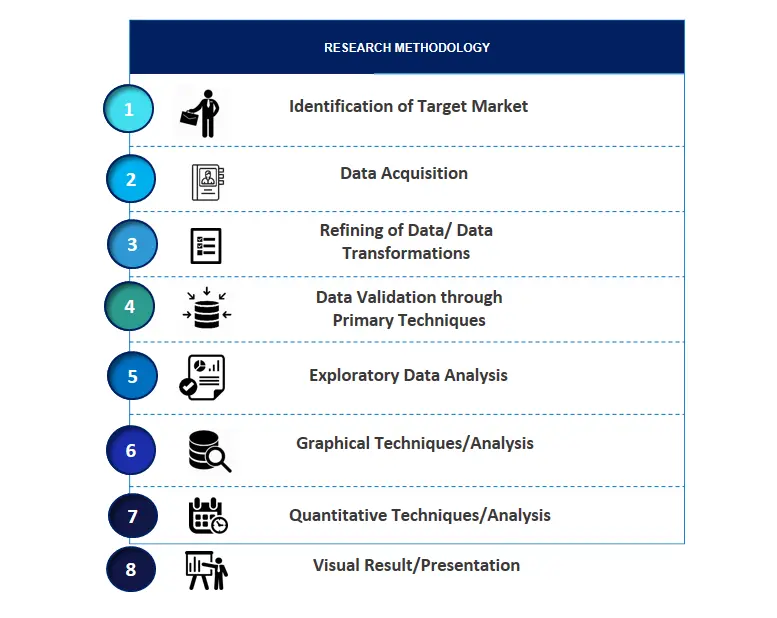
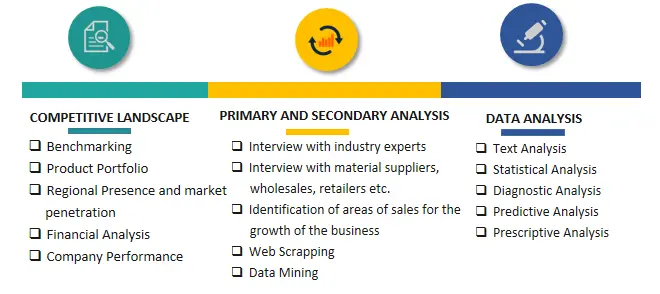

Frequently Asked Questions About This Report
PLACE AN ORDER
Year End Discount
Sample Report
Pre-Purchase Inquiry
NEED CUSTOMIZATION?
Request CustomizationCALL OR EMAIL US
100% Secure Payment






Related Reports
Our Global Clients
Our data-driven insights have influenced the strategy of 200+ reputed companies across the globe.




















